Home & Living
Trowel Talk
We run a criminal background check on eight common garden bugs.
If garden bugs had lobbyists in Congress, they’d tell you many of their kind get a bad rap from gardening novices. They’d be partially right: Certain types oaf bugs play a critical role in the eco-system. So it really comes down to the question: Are they “good bugs” or “bad bugs”? Here’s a sort of police lineup on an assortment of critters you’ll find in the Mid-Atlantic region.
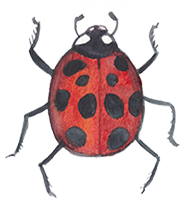
Ladybugs
If this common and very welcome beetle is plentiful in the summer, it’s because there are lots of aphids, mites, and other small insects to snack on. The adults of this tough, hard-shelled little species overwinter in large groups, then re-emerge around May until September.
Verdict: good bug.
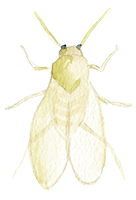
Greenhouse Whitefly
There’s a “Wanted” poster out for this one: Considered to be one of the biggest pests associated with indoor plants, it also can be found in gardens in the South, the tropics, and homes throughout the U.S. The whitefly looks like a tiny moth with milky white wings and feeds on the juice from a variety of plants. It infests each host by depositing a layer of white, waxy material, which, if touched, feels more like a frothy coating that eventually suffocates the plant.
Verdict: bad bug.
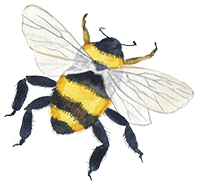
Honeybees and Bumblebees
Both of these are crucial for cross-pollination in our gardens. Without bees, our gardens’ health would suffer and many species of flora would eventually perish. If you’re allergic to bee stings, admire them from a safe distance: They only sting when provoked.
Verdict: good bugs.
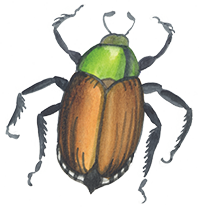
Japanese Beetle
The adult beetle, metallic green in color, damages leaves and ripening fruit, including vines, flowers, shrubs, and trees, as well as numerous budding roses. But cool it on the chemicals: As the beetle does its damage from late May to mid-July, it’s easiest to pick them up by hand.
Verdict: bad bug.
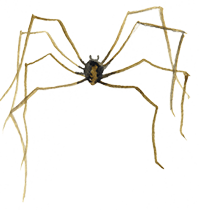
Daddy LongLegs
A harmless fellow with long, thin legs, daddy longlegs live on tree trunks and open ground and primarily feed on small insects and decaying organic matter. They mature in summer and are valuable to humans by keeping a variety of insects under control.
Verdict: good bug.
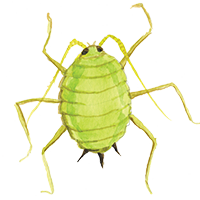
Aphids
These bad actors often lay their eggs on the stems of the host plant, such as roses, peas, potatoes, and apple trees, then go camouflage on you, blending in with the color of the plant. Infestation often occurs when there’s limited plant variety. In a balanced garden setting—say, a good mix of herbs and annual and perennial flowers, etc.—they do less damage. Mix up a harmless brew of one part dish soap and two parts water and spray directly onto aphids.
Verdict: bad bug.
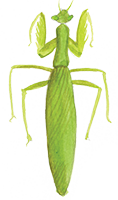
Praying Mantis
Put away your weapon, I mean you no harm! The alien-looking, often motionless praying mantis is a wonderful bug and most beneficial to our gardens. It dines on caterpillars, flies, butterflies, bees, and some moths. It attaches its egg cases to tree limbs or shrubs in the fall, and new hatchlings, green in color, suddenly break out of their egg case on a warm, late spring day, all at once and perfectly formed, by the hundreds.
Verdict: good bug.
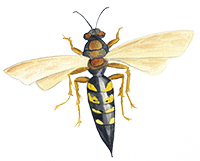
Giant Cicada Killer
This common, black, giant wasp drinks plant nectar, while larvae feed on cicadas. Adult females work together to dig elaborate connected tunnels in their hunt for cicadas. Then, one at a time, they sting the victim and carry it back to the nest.
Verdict: hung jury.